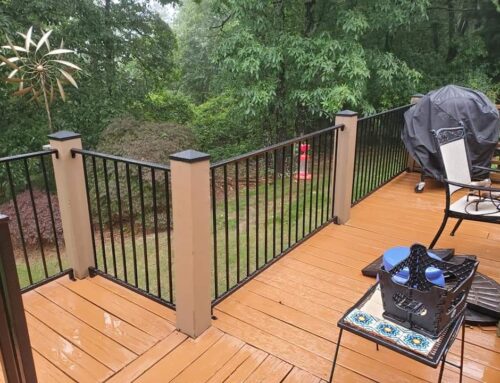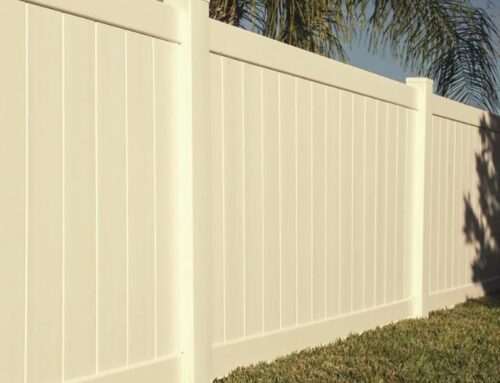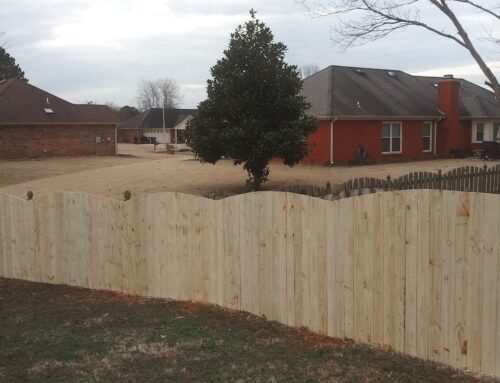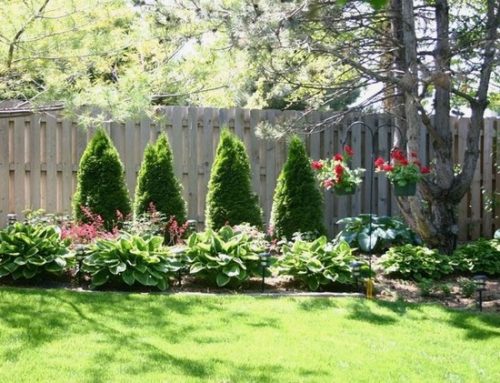What Do You Need to Build a Fence?
Learning what you need to build a fence is crucial, as the process can become easy with the correct materials.
To build a fence, you need strong materials like treated posts, rails, pickets, screws, and cement. You’ll also need tools like a shovel, a post-hole digger, a tape measure, and a level. These materials and tools help strengthen your fence and last a long time.
Need expert help with building your fence? Contact Huntsville Residential Fencing for quality installation, professional service, and durable results. Let’s build your perfect fence today!
What Do You Need to Build a Fence?
You need strong materials and tools for safety and accuracy to build a fence.
- Fence Posts: Treated wood keeps the fence strong and lasts for decades.
- Fence Rails: These connect the posts, giving the fence structure.
- Fence Pickets: Treated wood makes the fence durable and stable.
- Rail Brackets: Help secure the rails to the posts.
- Fence Screws: Keep everything in place.
- Cement: Secures the posts firmly in the ground.
- Shovel: Digs the holes for the posts.
- Post Hole Digger: Makes deeper, more accurate holes for posts.
- Tape Measure: Measures the correct distance between posts.
- Post Level: Ensures posts are straight.
- Stakes and Strings: Help guide and mark where the fence will go.
A fence company in Huntsville, AL can help provide the right materials for a lasting fence!
Fence Building Materials & Tools Checklist
| Category | Items Needed | Purpose |
|---|---|---|
| Materials | Fence Posts (Treated) | Provides fence strength & supports vertical weight |
| Rails | Connects posts & supports pickets | |
| Fence Pickets | Creates the fence’s main body | |
| Rail Brackets | Secures rails to posts | |
| Fence Screws | Holds materials together | |
| Cement | Secures posts into the ground | |
| Tools | Shovel | Digs holes for posts |
| Post Hole Digger | Creates deeper, more accurate holes | |
| Tape Measure | Ensures accurate spacing | |
| Post Level | Keeps posts straight & balanced | |
| Stakes & Strings | Guides the fence layout |
How to Build a Fence – Step by Step
Building a fence may seem like a big task, but following these simple steps will make it easy. Let’s dive in!
Step 1. Choose the Fence Style and Height
Start by deciding what type of fence you want. Choose the style that best fits your needs, whether it’s a picket, privacy, or chain-link fence. You should also decide on the height of the fence. Higher fences offer more privacy and security, while shorter ones are usually decorative. Think about the purpose of the fence before making your final decision. Consider your property’s needs and local regulations about height restrictions.
Step 2. Determine the Fence Layout
Next, you need to plan where the fence will go. Measure the perimeter of your yard or property to determine how much fencing material you need. Use stakes and string to mark the fence’s path, ensuring it’s straight and in the right spot. Make sure to leave space for any gates. Planning the layout is crucial for a fence that looks neat and functions well. Double-check measurements before digging.
Step 3. Check Local Regulations and Acquire Necessary Permits
Before you begin, check local regulations about building fences. Some areas have rules about the type of fence, height, and location, especially near property lines. You should apply for a permit before starting the project. Contact your local zoning office or visit their website for the necessary information. By following the rules, you’ll avoid fines or issues with neighbors. It’s essential to understand your legal requirements before moving forward.
Step-by-Step Fence Building Overview
| Step | Task | Summary |
|---|---|---|
| 1 | Choose Fence Style & Height | Select design based on privacy, security & aesthetics |
| 2 | Determine Layout | Measure & mark fence line with stakes and string |
| 3 | Check Regulations & Permits | Confirm local codes & acquire needed permits |
| 4 | Gather Tools & Materials | Prepare all materials before starting to avoid delays |
| 5 | Dig Post Holes | Dig holes at least 1/3 post length deep |
| 6 | Set Posts in Cement | Use cement & a level to secure posts straight |
| 7 | Attach Fence Panels | Install panels focusing on alignment & spacing |
| 8 | Install Gate | Add hinges & latches; ensure smooth movement |
| 9 | Stain or Finish | Protects wood from weathering & improves appearance |
Step 4. Gather the Necessary Tools and Materials
Once you have the plans, gather all the necessary tools and materials. You’ll need fence posts, rails, panels, screws, cement, tools like a shovel, post-hole digger, tape measure, and level. It’s crucial to have everything ready before you begin to avoid delays. Make sure the wood is treated for durability and weather resistance. Having all your materials on hand ensures the project runs smoothly from start to finish.
Step 5. Dig Holes for the Fence Posts
Use a post-hole digger to create holes for your fence posts. The depth of the hole depends on the post’s size and the fence’s height. Typically, holes should be at least 1/3 of the post’s length. Make sure the holes are deep enough to provide stability for the posts. Spacing between posts should be consistent, so measure carefully before digging. It’s important to keep the holes straight and level for proper installation.
Step 6. Set the Fence Posts
After digging the holes, it’s time to set the posts in place. Position the posts in the holes and use a level to ensure they stand straight. Fill the holes with cement to keep the posts secure. Allow the cement to cure for at least 24 hours to set the posts firmly. Correctly set posts are the foundation of a strong fence, so take your time and ensure they are installed correctly.
Step 7. Attach Fence Panels
Once the posts are in place, attaching the fence panels is time. Depending on your fence style, you may use rails, brackets, or screws to attach the panels to the posts. Start at one end of the fence and work along the posts, ensuring each panel is level. It’s essential to check the alignment regularly to keep the fence straight. Attach all the panels securely, making sure they’re evenly spaced.
Step 8. Install a Gate
If your fence needs a gate, this step will ensure it fits correctly. Measure and mark where the gate will go, making sure it aligns with the fence. Install the gate hardware, including hinges and latches. Make sure the gate opens and closes smoothly. It’s important to double-check the gate’s alignment with the posts to ensure it doesn’t sag over time. Proper installation ensures the gate functions properly and adds to the overall strength of your fence.
Step 9. Staining and Finishing
To protect your fence from the elements and enhance its appearance, apply a coat of stain or finish. This helps prevent the wood from rotting or fading over time. Use a brush or sprayer to apply the finish to all parts of the fence evenly. Let the stain dry according to the manufacturer’s instructions. If you’re using a treated wood fence, staining or sealing helps increase its lifespan. A finished fence will look better and last longer.
Sum Up
Now you know what you need to build a fence? It’s important to gather the right materials and tools. Proper planning ensures your fence is sturdy and long-lasting. For the best results, consulting experts for installation and advice is always a good idea. For expert fence building, contact Huntsville Residential Fencing. Our team provides top-quality materials and craftsmanship for a fence that will stand the test of time.
FAQ
Do I need a permit to build a fence?
Yes, many cities require a permit depending on fence height, location, and material. Always check local regulations before starting construction to avoid violations.
What do you need to build a privacy fence?
You’ll need posts, panels, concrete, hardware, tools, and accurate measurements. Check property lines and local rules to ensure proper installation and compliance.
Do you need to build a fence gate?
A fence gate is essential for access, convenience, and safety. Most fences include at least one gate to enter your yard or service areas easily.
Do you need a city permit to build a fence?
In many areas, yes. Cities often require permits to regulate fence height, setbacks, and safety. Contact your local building department before beginning work.
What do you need to build a wood fence?
You’ll need wood panels or pickets, posts, concrete, screws, brackets, and tools. Measure carefully, mark property lines, and follow local building codes for compliance.





